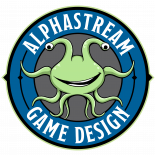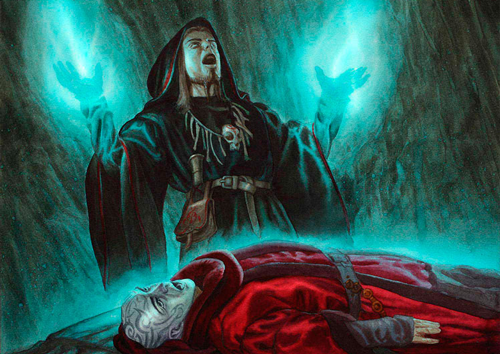New Campaign? Finish the Old One with a To-Do List
The end of a campaign is the perfect time to reflect on what we enjoyed, wish we had done, and hope to do in the future. This way, the campaign’s end can become the first important step in our next campaign.
New Series!
A while back, M.T. Black said he would like to see my complete “to-do” list for a home campaign. I’ve kept notes as I completed a few campaigns to share my thoughts in a series of blog articles.
And on the Mastering Dungeons podcast, we started a series of episodes exploring worldbuilding and campaign design! Links to the episodes at the end of this article.
Step One is the End
My to-do list for a home campaign begins with the end. (Has it been a while since you ran a campaign? You can benefit from the ideas here by thinking back on previous campaigns – even ones where you were a player!)
When a campaign is ending, I’m focusing and pruning story arcs. I’m also trying to meaningfully resolve all of the character’s goals, some of which came from ideas I had for the type of gameplay we would have in the campaign. It’s a great time to reflect on what I set out to accomplish vs what I actually accomplished.
For example, in a campaign where I enabled the characters to have a home base, we all may have had many ideas around how the home base could grow, the influence it would have on gameplay, and the interplay between their goals for the base and the larger campaign story arcs. In a wilderness exploration campaign, I may have had ideas around different wilderness nations, dungeons and forest encounters I never used, geographical features I meant to bring in, or new tools such as encounter tables or weather tables that never quite saw complete development. Some great ideas never make it into play at all.
And that’s where the end of the campaign is the first step for a new campaign.
Reflecting on What Worked
As the old campaign ends, we can reflect on new techniques and ideas that worked well. Maybe we had a system for scheduling, or we tried a new rule using hirelings when some players were absent. We might have found a size of dungeon that worked best for us, or how to have the right number of NPCs in a campaign to keep things interesting and dynamic, but not overwhelming.
A simple list of what worked is a great start. Think through the campaign and what worked well. Note those and add any details you need to capture what you want to do next time. You may find that even with something that worked well, you may want to try variations. Maybe short dungeons worked really well to keep player interest high, but you might decide to try more levels and vary the terrain in a dungeon, so one dungeon can be larger but stay fresh. You might find that having 10-12 central NPCs phased in over time worked well, but decide to try assigning them to factions and have labeled art of each NPC to make them easier to remember.
What Remains Compelling
Similarly, you can make a list of what remained compelling but wasn’t fully tested. This can be the ideas you never got to try. You wanted to have a classic “whodunit” mystery, but never found the time to introduce it. You wanted to try some vehicle combat rules and you still haven’t found a way to use that cool swamp terrain you bought. All of these items can go on your list for the next campaign.
You can also include items that didn’t quite work as well as you hoped, but still remain compelling. You introduced factions partway through the campaign and the players never were too interested. Next time, you want to introduce these from the very beginning in a session zero, weaving them into character backstory. You might have experimented with a solo monster that divided into lesser versions of itself… that was okay, but might work better if it stays whole but shunts off parts of itself to become swarms or minions the party also has to fight.
New Ideas
We can note new ideas we never had a chance to add to the campaign. We might have purchased a cool monster mini that didn’t fit the old campaign but might work for the next. Maybe we read a blog article discussing downtime and want to make that part of our next campaign. Maybe we were heavy on intrigue, so this time we want to try a different type of campaign focused on exploration.
What to Avoid
I don’t personally focus on campaign aspects that didn’t work. However, you may benefit from briefly going over issues and note what you want to avoid for future campaigns. My personal approach is to focus on what works.
Sorting Our Ideas
I like to take all my ideas, often scribbled on paper, and write them digitally in a more organized fashion. I sort ideas into the following categories:
Campaign Concepts: These are major campaign concepts such as player-focused space exploration or having the PCs run a business. It’s okay if ideas are mutually exclusive – we are excited to have an urban intrigue campaign and also one of exploring remote wilderness. We still note both ideas at this stage and will pick later. Here are some examples from one of my after-campaign lists:
- Steal 13th Age’s concept of Icons and use them for factions.
- Establish a home base they come back to and care about and build up.
- Threaten what they love, but they come out stronger for it.
- Make sure they have big dreams they can realize.
- Explore wilderness and find important things.
Approaches to Play: These are changes we want to make to how we run the game, from trying out table tents with character art to having fewer main NPCs.
- Get everyone on Discord for post-session discussions
- Art for each major NPC. Let players choose the art when they hire the NPC.
Plots and Story Arcs: Ideas we had for story aspects that can fit into a larger campaign. A whodunit mystery, exploring elemental planes to recover a lost item, bargaining with a devil. A particular type of NPC, patron, or faction.
- Reveal the villain’s plots layers at a time.
- Have a dungeon crawl at least once.
- Have a villain they can defeat early, and one that gets away.
- Have 1-2 sessions where darkness really matters
Encounter Concepts: All the ideas we can use to create cool encounters. Monsters, traps, terrain, and so on.
- A monster is trying to stop a trap, which hurts everyone. Help them or fight the monster?
- Froghemoth, and what it has eaten is regurgitated when it takes damage and joins the fight.
- All the ideas from Raiders of the Lost Arc (this one just lives on my to-do list)
Miscellaneous: Anything that doesn’t fit the above.
Now, as we end a campaign, we are already armed with ideas for the next one. But what kind of campaign should the next one be? What RPG? We tackle this next time.
Campaign and Worldbuilding on Mastering Dungeons
On the podcast we tackle worldbuilding and starting a campaign. The episodes to date:
- Worldbuilding Tips and Tricks (MD 179)
- Building and Changing Rules to Fit Your RPG World (MD 180)
- Design an RPG Starting Village! (MD 182)
- Design an RPG Starting Adventure (MD 183)
- Design an RPG Starting Encounter (MD 184)






 Mastodon
Mastodon BlueSky
BlueSky
Pingback: Choosing the RPG for Your Next Campaign
Pingback: A Monday Miscellany of Links pt. XVII | Stuffed Crocodile
Why do you recommend “Steal 13th Age’s concept of Icons and use them for factions”? What do you like about it?
Thanks
I find 13th Age has a very elegant system for driving play with factions. First, the world has these icons and they shape life. The archmage, the diabolist, etc. they are all active so they are relevant and act at any level (the city, the cosmos). Then, each PC has relationships with some of them. Favored with archmage, but problematic with the diabolist, etc. And then you can roll dice to determine icons playing a part or assign them. There is a fun Pelgrane Press article that dresses up common stories with icons. It can show that potential to color the world with the icons. It’s a dungeon, once belonging to the diabolist and the archmage sent agents to claim it, but you are there working for a third faction. https://pelgranepress.com/2024/01/29/13-quick-iconic-plots/